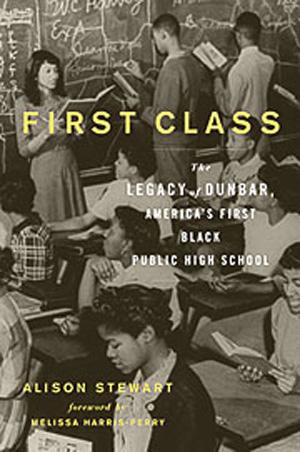
First Class: The Legacy of Dunbar: America's First Black Public High School
$29.95
Lawrence Hill Books
"The Story of Dunbar shows what can happen in spite of huge, legal, societal and professional hurdles. It shows what is possible when a group of people focus and band together to make something better … Dunbar helped create the greatest generations of African-Americans."
From 1870 to 1955, Washington, D.C.'s Dunbar High School sent thousands of African-Americans to some of the nation's elite colleges, from Harvard, Princeton and Yale, to Amherst, Colgate and Brown. The school employed black teachers with masters and Ph.D.s who taught a classical, liberal arts curriculum and had high expectations of their students.
But after the famous Brown V. Topeka Supreme Court decision, Dunbar went from being a world-class college-prep magnet school, to a neighborhood institution mostly comprised of poor, inner city kids, mired by faulty equipment, crime and mismanagement.
Dunbar's rise as the America's first black public high school, its nadir and its heroic resurrection, is the subject of this eloquently written and comprehensively researched book by TV journalist Alison Stewart. The daughter of Dunbar alumni, Stewart shows how the school's highly accomplished teachers, which included historian Carter G. Woodson, author and W.E.B. Du Bois confidant Jessie Redmon Fauset and Haley Douglass, the grandson of Frederick Douglass, forged a formidable phalanx of exceptional students that included sculptress Elizabeth Catlett, lawyer Charles Hamilton Houston, jazz pianist Billy Taylor, senator Edwin Brooke and doctor James Bowman, the father of Obama's advisor, Valerie Jarrett. Stewart elegantly chronicles the school's successes, but does not gloss over its challenges; from charges of elitism, colorism and overcrowded classrooms, to gang violence and low expectations.
The book concludes on a hopeful note, with the opening a new Dunbar building poised to provide today's students with the same type of high-powered curriculum, tailored for the twenty first century. Ms. Stewart's wonderful book reminds us that many of today's educational problems were successfully dealt with years ago, and there is no reason why that kind of excellence can't be achieved again.
